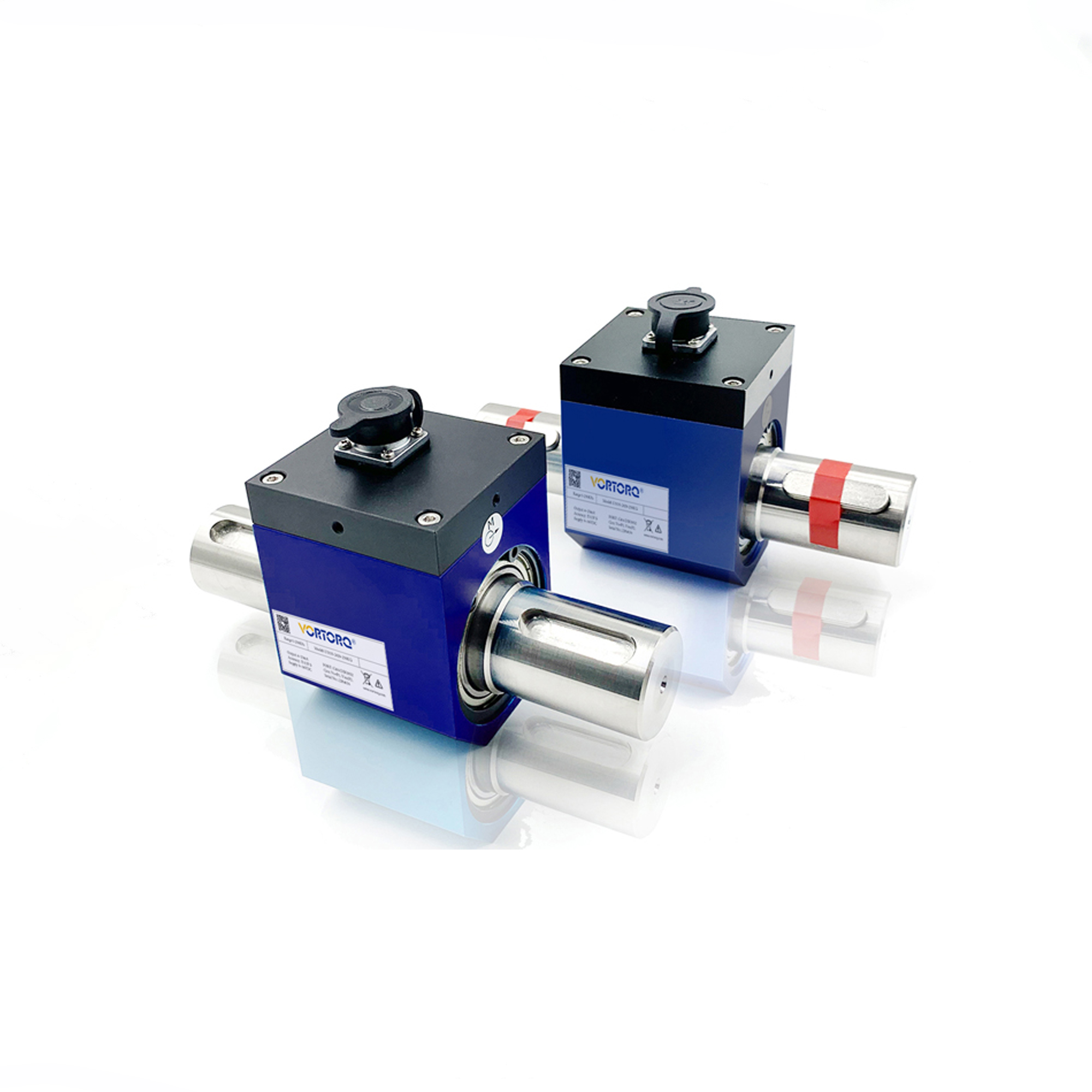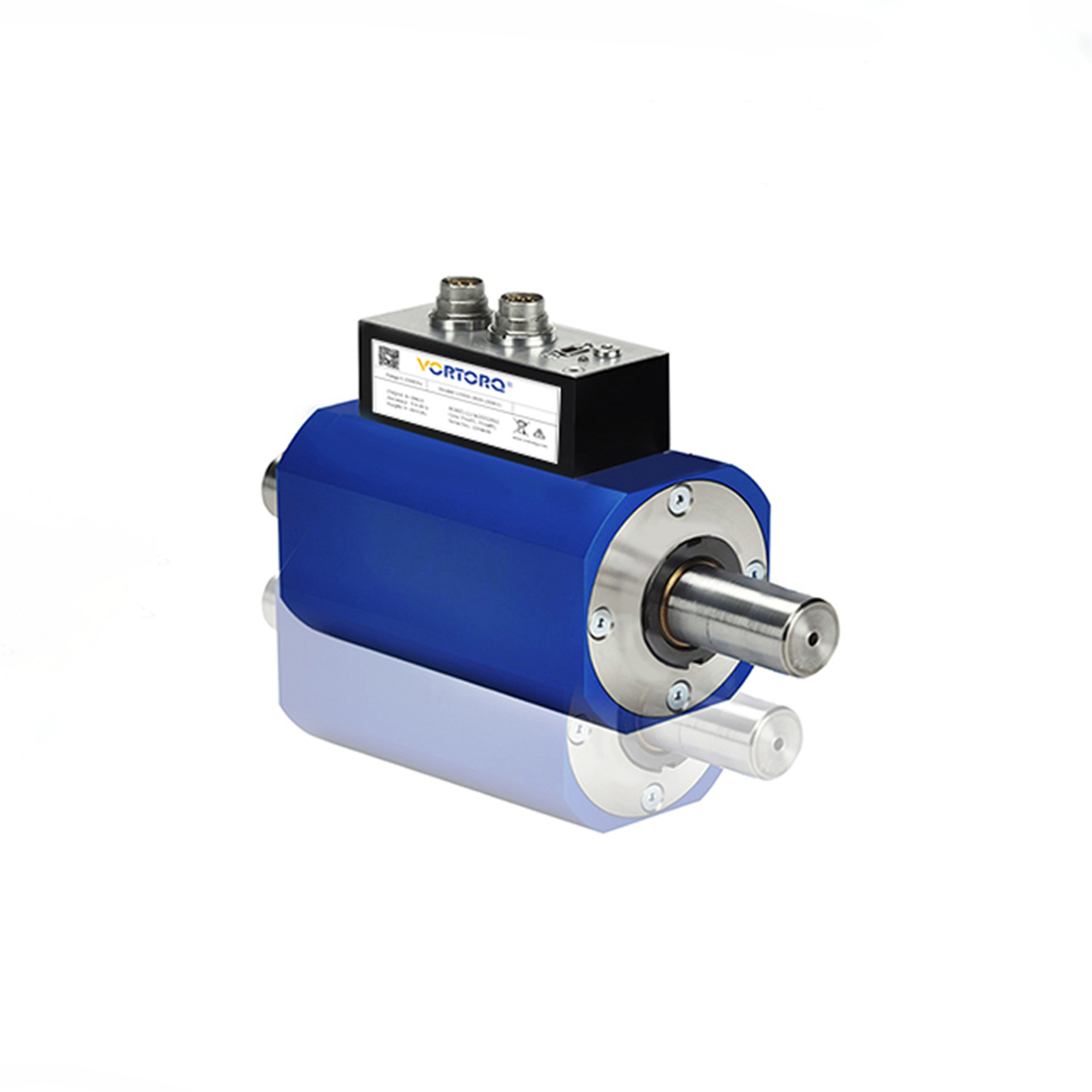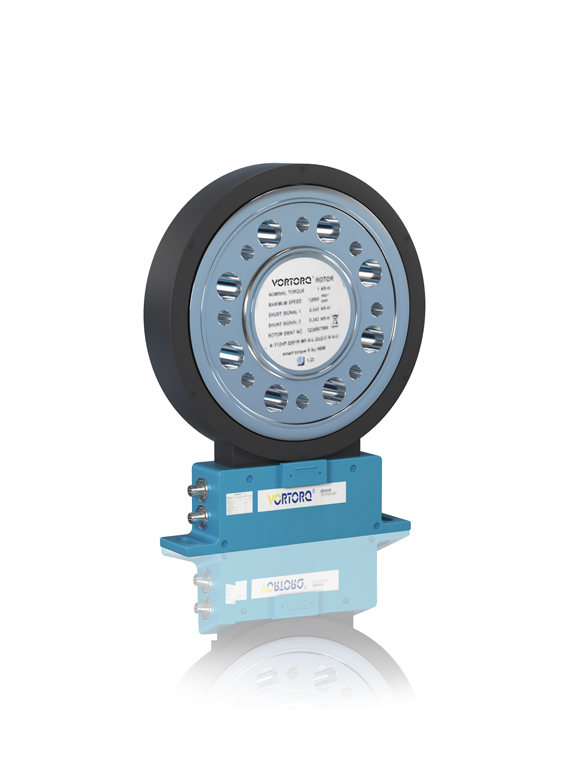Torque Sensor
Innovative technology
VORTORQ® patented technology torque transducers use precise strain gauge technology, and it is a powerful solution for measuring rotating shafts and long-term dynamic and static measurements. The sensor can handle the most demanding tasks with the highest precision in a robust environment. In addition, its excellent overload protection and high signal resolution make it suitable for torque measurement tasks under various measurement conditions.

VT5MS1
Over view
The VT5MS1 is a high precision, reliable dynamic rotary torque sensor. Ranging from 1N.m, 10N.m, 20N.m, 50N.m, 100N.m, 200N.m, 300N.m, and 500 N.m.
It can present ideal test data when testing clockwise and counterclockwise torque. Due to its excellent craftsmanship and special test procedures provide high accuracy, low linearity, and low hysteresis. This sensor can be either used for quality control or R& D research.
The VT5MS1 torque sensor uses a unique patented DPT technology; it is small in size and capable of high speed and low maintenance. Therefore, these sensors are suitable for various production environments, whether a shift-based production line, test bench or offline test system. In addition, the VT5MS1 torque sensor can conduct stable torque measurements during continuous operation. Therefore, it is suitable for professional test bench measurement of holding, friction, separation, or tightening torque.
Description
The VT5MS1 torque sensor comprises the rotary shaft, the anodic oxidation aluminum alloy, and the output electronics. The rotor consists of several parts, and the actual measuring device is a rotary shaft. The rotary shaft and the strain gauge is the spring element. It is designed is to deform elastically under an applied torque. When the sensor is in torsion, it produces a tiny amount of strain in the material of the measuring element. This strain is linear and proportional to the applied torque within certain limits. It can be measured using strain gauges, which connect in a Wheatstone bridge circuit. A microprocessor conditions the signal from the Wheatstone bridge and transfers it to the stator.
Application
For customers with mobile use and instant digital access to measurement data, the VT5MS1 torque sensor also has a back-end USB interface. A laptop or PC running Digivision. PC software can read, visualize and archive measurement data. We can provide driver packages to integrate the system into LabVIEW easily.
► Suitable for use in all types of test bench
► Test setups for precision mechanics
► Haptics testing of actuator elements
► Engine test benches and power measurement
► Biomechanical product testing
► Size of bearing friction torques

VT5MDS1L2
Over view
The VT5MDS1L2 is a reliable dual range dynamic torque sensor. It can present ideal test data when testing clockwise and counterclockwise torque. Due to its excellent craftsmanship and special test procedures provide high accuracy, low linearity, and low hysteresis. This sensor can be either used for quality control or R & D research.
The VT5MDS1L2 torque sensor uses unique DPT technology; it is small in size and capable of high speed and low maintenance. Therefore, these sensors are suitable for various production environments, whether a shift-based production line, test bench or offline test system. In addition, the VT5MDS1L2 torque sensor can conduct stable torque measurement during continuous operation. Therefore, it is suitable for professional test bench measurement of holding, friction, separation, or tightening torque.
Specifiction
Rated torque: 0,2 … 5 000 N∙m
Ratio for second range: 1:10 or 1:5 of rated torque
Speed ranges up to 20000/min
Accuracy class in standard measuring range: 0.05% F.S, 0.1% F.S, 0.3% F.S, 0.5% F.S,
In the extended measuring range: 0.1% F.S ,0.2% F.S ,0.6% F.S,1%% F.S
Integral speed sensor, high resolution speed/angle measurement sensor up to 9000 pulses/revolution as option
Serial data output RS-232C and USB interface
Freely selectable torque output frequency or voltage
One sensor for two separately calibrated measuring ranges
Descriptipn
The torque sensor has a speed encoder, which can measure 60 pulses per revolution. Therefore, it can test the speed while testing the torque, a perfect design to save space or budget. For customers with mobile use and instant digital access to measurement data, the VT5MDS1L2 torque sensor also has a back-end USB interface. A laptop or PC running Digivision. PC software can read, visualize and archive measurement data. We can provide driver packages to integrate the system into LabVIEW easily.
► Test setups for precision mechanics
► Haptics testing of actuator elements
► Engine test benches and power measurement
► Biomechanical product testing
► Size of bearing friction torques
► Suitable for use in all types of test bench
Application
The VT5MDS1L2 torque sensor output is 4 ~ 20mA, ± 10V, RS485 / 232, and TCP / IP, which can perfectly communicate with software platforms including Windows, Linux, and LabVIEW, and hardware platforms including STM32 and Arduino. Furthermore, according to customers’ requirements for different ranges and accuracy, we provide customized services for sensors.
Some standard methods:
It is realized by inserting a data acquisition card into the PC, and the sensor provides 4 ~ 20mA or ± 10V analog signal;
Connect PC through the data collector of USB interface, and the sensor provides 4 ~ 20mA or ± 10V analog signal;
Connect PC through RS485 or RS232 interface;
Connect PC through Ethernet port and complete data communication through TCP / IP protocol.

VT12VX
Over view
-
Short axial dimension, double-sided flange structure
-
Bearingless, high-speed, long-term operation
-
Both static and dynamic torque can be measured
-
Rigid connection with power and load shaft, accurate measurement
-
Two-way torque measurement without repeated zeroing.
Description
Short axial dimension, double-sided flange structure
Bearingless, high-speed, long-term operation
Both static and dynamic torque can be measured
Rigid connection with power and load shaft, accurate measurement
Two-way torque measurement without repeated zeroing.





















